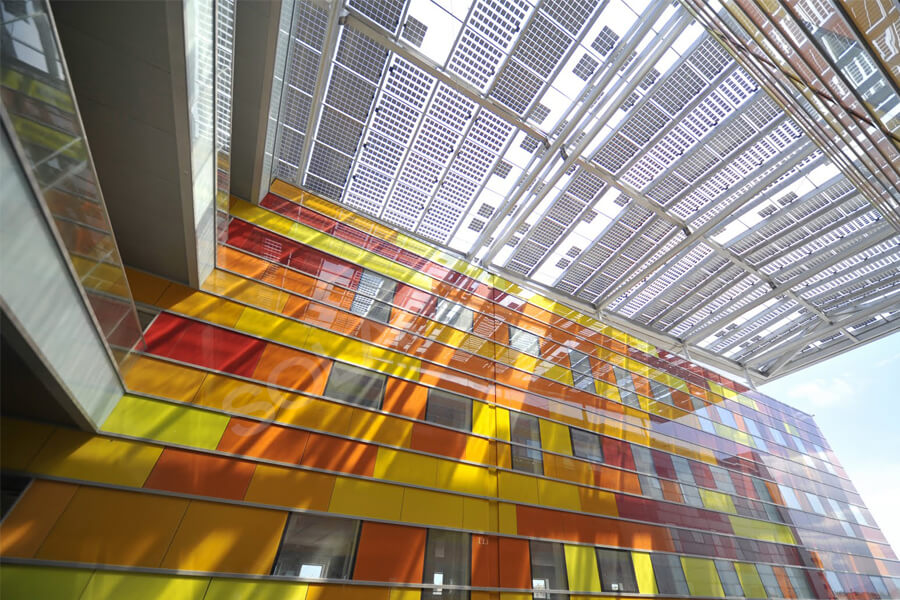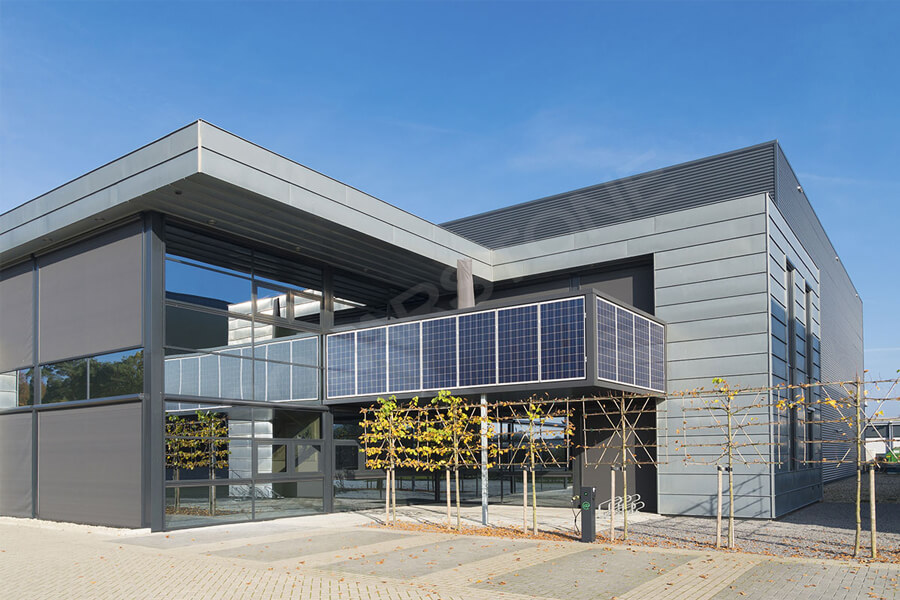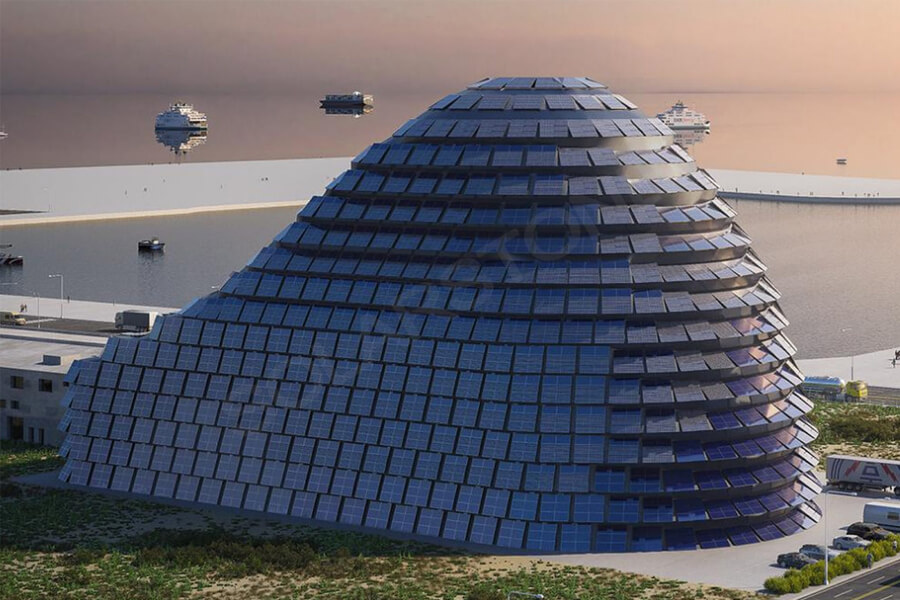One of the most promising renewable energy technologies is photovoltaic. Photovoltaic (PV) is a truly harmless on-site power generation method that generates electricity directly from the sun without worrying about energy supply or environmental hazards. These solid-state devices only generate electricity from sunlight, silently, maintenance free, pollution-free, and do not deplete materials.
BIPV is a promising new technology in the solar energy industry. More and more solar power plants around the world are closely integrated with architectural design and organically integrated into urban environments.
The Development Trends of BIPV
More and more people believe that distributed photovoltaic systems that provide electricity at the point of use will first be widely commercialized. The most important of these distributed applications is the photovoltaic power generation system used for individual buildings.
The interest in photovoltaic building integration is growing, with photovoltaic components actually becoming an integral part of buildings, typically used as external weather skins. Photovoltaic experts and innovative designers from Europe, Japan, and the United States are exploring creative ways to incorporate solar energy into their work.
As the market grows, two fundamental trends are clearly observed:
Technical factors: improving the efficiency of private solar power plants, increasing their power capacity, and creating systems that can provide functionality to households in a fully autonomous mode due to the installation of large capacity storage systems and optimized power accumulation/consumption processes.
Aesthetic factors: The homeowner wishes for the photovoltaic modules to be fully and naturally integrated into their building solution, in line with the main style of interior decoration.
Manufacturers attempt to meet all requirements and provide a comprehensive solution for their consumers; The increasingly popular ones are solar power plants integrated (built-in) into buildings, or BIPV solutions (from building integrated photovoltaics).
Development characteristics of BIPV systems
Building Integrated Photovoltaic (BIPV) involves integrating photovoltaic modules into building envelope structures, such as roofs or facades. By simultaneously using BIPV systems as building envelope materials and generators, material and electricity costs can be saved, fossil fuel usage and ozone depleting gas emissions can be reduced, and building fun can be added to the building.
BIPV is an optoelectronic module that is not only used for power generation, but also a valuable part of houses as wall materials or roof coverings; They can be used as coverings, peaks, and other architectural structural elements. Therefore, it is necessary to distinguish between two concepts:
BAPV (Building Additional Photovoltaic) is a photovoltaic module that can be considered as an additional structure of a house. When the installation of buildings is completed, they are assembled and perform their basic and sole responsibility of generating electricity through the conversion of solar radiation.
They can be dismantled at any time, and their integrity and building reliability will not be affected here. The simplest and most common example of BAPV is a rooftop solar power plant assembled on the main roof covering.
BIPV (Building Integrated Photovoltaic): Solar modules are integrated into buildings and perform the same functions as the elements of built-in placement panels; BIPV components protect the house from moisture and wind, improve insulation and sound insulation, and work as solar panels to generate electricity. Their installation plan is carried out during the architectural design phase and can only be dismantled when they are replaced with equivalent building materials.








